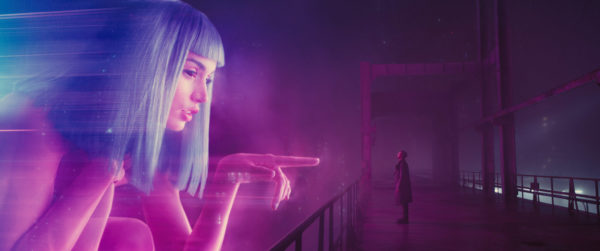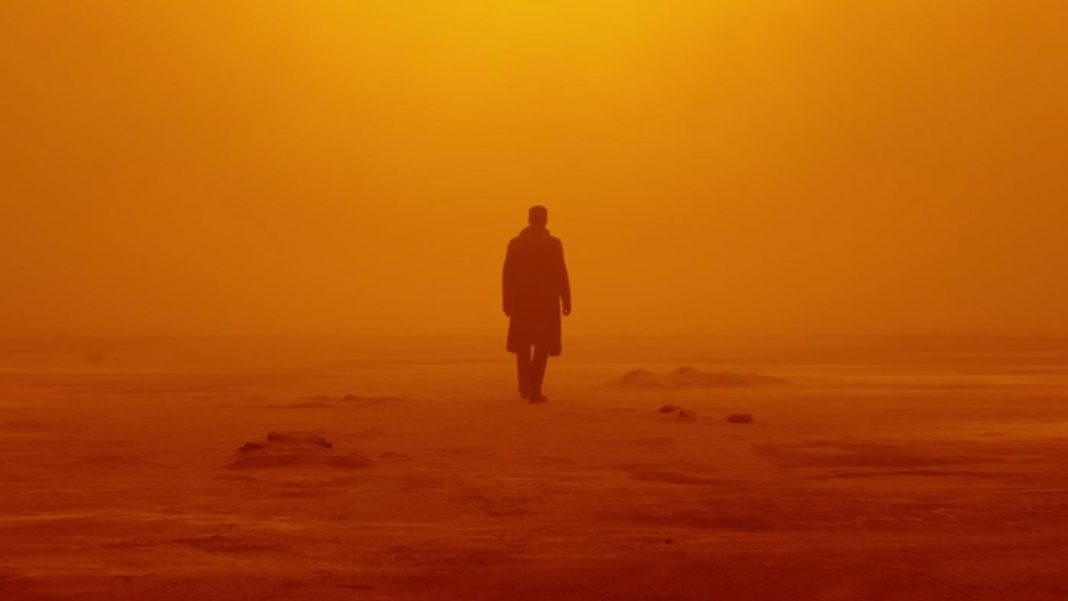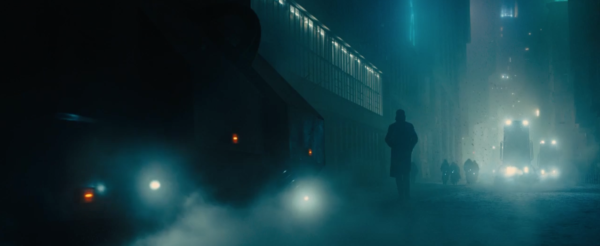Producing a Blade Runner sequel that lived up to the original could have ended up as a Sisyphean task. The original is exalted as a benchmark by which all science fiction films are judged. How could anyone make something that even comes close to that?
Denis Villeneuve and Hampton Fancher, apparently.
2049 is classic Blade Runner writ large. It takes all that was good about the original and amplifies it. It is a film of more: more locations, more characters, more action, more sci-fi.
It is also a film of contrasts: between nothingness and and the plenty of sybaritic lifestyles; between retro technology and fanciful futuristic contraptions. You can also map contrast across the two films themselves. Where the original was a narrow-focus neo-noir thriller, the sequel is more grandiose.
This increased scale and scope carries it beyond the suffocating man-in-city struggle of the first film, with bigger stakes to match. The result is a film that is distinctly Blade Runner, but with added drama, and more complex motivations.

The inner conflict of protagonist K as he tries to find and understand humanity is reminiscent of that expressed by Roy Batty, the antagonist of the first film, played by Rutger Hauer. This highlights the irony of the differences between human and replicant: replicants struggle with their manufactured existence, while the real humans surround themselves with fakes and forgeries of the things they have destroyed.
The biblical musings of Niander Wallace (head of the Tyrell Corporation) fuel the narrative, and in some ways they echo Roy. Unfortunately, Jared Leto’s performance felt somewhat wasted on a character with so little time on screen. He’s not a bad villain necessarily, just an underused one.
There is one other sore spot: the film’s treatment of female characters. The woman with the largest screen presence, Joi (played by Ana de Armas), is a digital maid designed to serve K. The second most prominent woman is Luv (played by Sylvia Hoeks) who as Wallace’s second-in-command does nothing but follow his every order. The two performances themselves are stellar, but the shallowness of the representation of women that these parts offer them left a sour taste.
Overall, the story is thoughtful and wholly engaging, and powered by fantastic performances from Ryan Gosling, Robin Wright and Harrison Ford. It has a different tone and structure to the first film, but the direction and writing are excellent throughout. It is a better film for the way it both strays from and builds on the original.
Roger Deakins has yet to win an Academy Award for his cinematography, and it would be a further insult if he was snubbed once again after his astonishing work here. The use of colour, character-isolating wide shots and carefully-considered lighting are exemplary, and work in perfect tandem with the brutalist architecture and grounded costume design.
For me, the biggest surprise of the film was the music. Vangelis’ soundtrack for the first film is legendary, so Zimmer’s delivery of a score that both refers back to and yet eclipses that was stunning. The same subtleties, motifs and ambience are present, with ever-descending synths, tribal chants and swelling bass breathlessly keeping pace with the tension of the film.
Blade Runner 2049 is an elegant movie, drawing on the old and new for inspiration. Villeneuve’s direction, Deakins’ cinematography and Zimmer’s score preserve the essence of Ridley Scott’s epic for a modern audience, but inject it with a newfound flourish that, against any odds, results in a better film.
5/5





